Create a stage template
The Harness Template Library enables you to standardize and create templates that you can use across Harness pipelines and teams. One type of template you can create is a stage template, which is a template of a Harness CD, CI, or approval stage that you can use in any pipeline in any project.
To demonstrate how to create, configure, and use stage templates, this topic adds a stage template to a CD pipeline. You can also create stage templates for CI Build stages, manual approval stages, and Jira approval stages.
The stage template demonstrated in this topic uses runtime inputs. Runtime inputs are placeholders for values that you provide when you start a pipeline execution. For more information, go to Fixed values, runtime inputs, and expressions.
Before you begin
- Review Templates overview.
- Review the Harness key concepts.
- You can add templates to template libraries at any scope.
- Tags can be used to group templates. You can search or filter templates using these tags.
- You can have nested templates. You can refer to a stage template in a pipeline template.
Step 1: Create a stage template
You can create a stage template from your account, org, or project. This topic explains the steps to create a stage template from the project scope.
To create a stage template, do the following:
-
In Harness, go to your project.
-
Select Project Settings, then, under Project-level resources, select Templates.
-
Select Stage to create a stage template. The Create New Stage Template settings open.
-
In Name, enter a name for the stage template, for example
Quickstart. -
(Optional) Select the pencil icon to enter a Description.
-
(Optional) Select the pencil icon to add Tags.
-
In Version Label, enter the version of the stage, for example,
v1. Versioning a template enables you to create a new template without modifying the existing one. For more information, go to Versioning. -
(Optional) Select the Logo icon to upload a logo image file.
-
From the Save To list, select the scope where you want to save the template: Project, Organization, or Account. For this example, select Project.
-
Under How do you want to set up your template?, you can select Inline to store your pipeline configuration in Harness, or select Remote to store your pipeline as code in a Git repository. For this example, select Inline.
-
Select Start. Select stage type settings open.
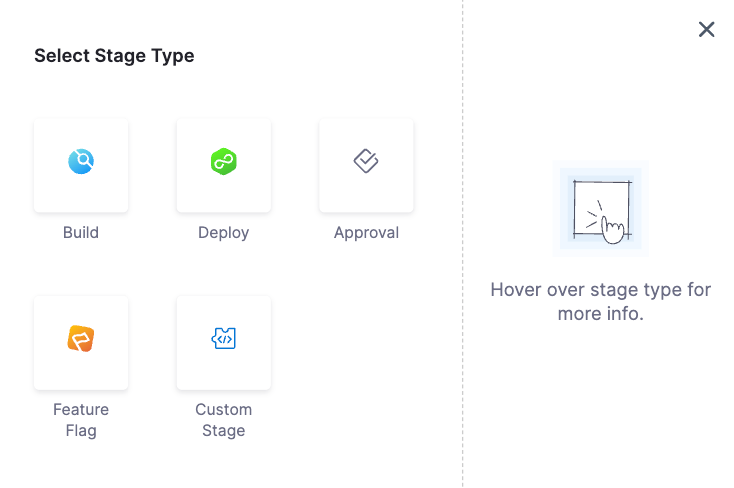
You can now add stage parameters.
Step 2: Add stage parameters
This example uses the Deploy stage. The Deploy stage type is a CD stage that enables you to deploy any service to your target environment.
Other options include:
- Build: Use CI to build, test, and push artifacts to repositories.
- Approval: Manual and Jira approval stages.
- Feature Flag: Enable or disable functionality remotely without redeploying code.
- Custom Stage: Set up a stage configurable to your needs.
To add stage parameters, do the following:
-
Follow the steps above to create your template.
-
In Select stage type, select Deploy. The About Your Stage settings open.
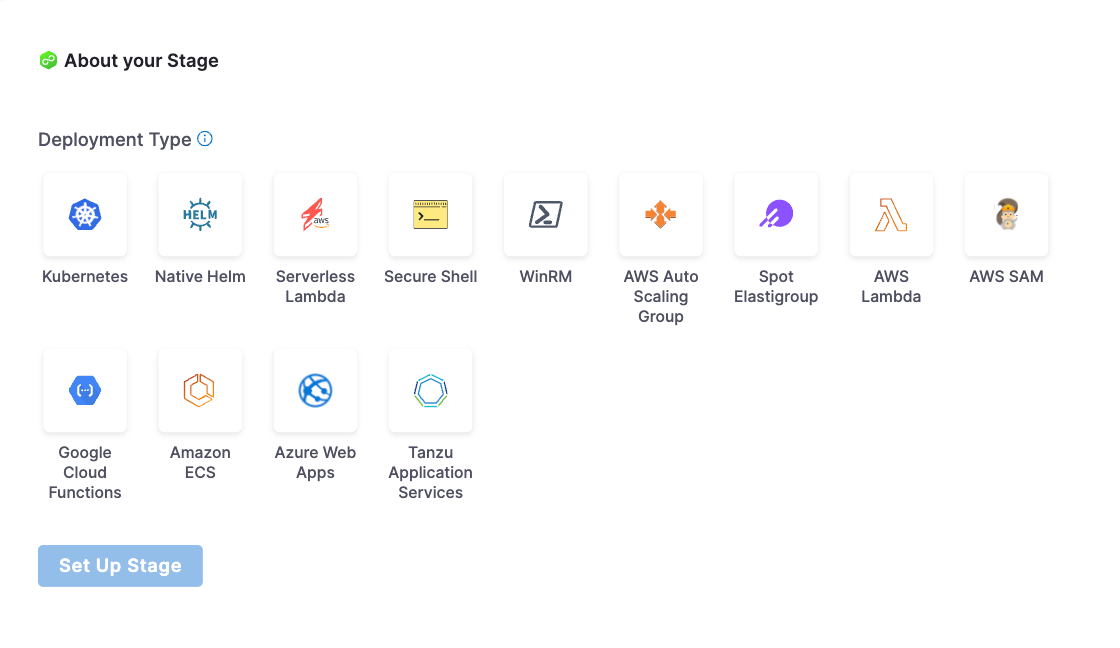
-
Select the type of deployment this stage must perform. For this example, select Kubernetes. The deployment type is how your service will be deployed. For example, using Kubernetes, Native Helm, Serverless, etc. Select the platform for your deployment. When you select a platform, its specific settings open.
noteIf you change the deployment type (for example, from Kubernetes to Native Helm) there might be some conflicting resources in the target environment. As a result, Stage execution can fail. If this happens, delete all the conflicting resources and try again. You will also lose any deployment type-specific steps in this stage's Execution.
-
Select Set Up Stage. The Template Studio page opens.
-
In Select Service, select Runtime input.
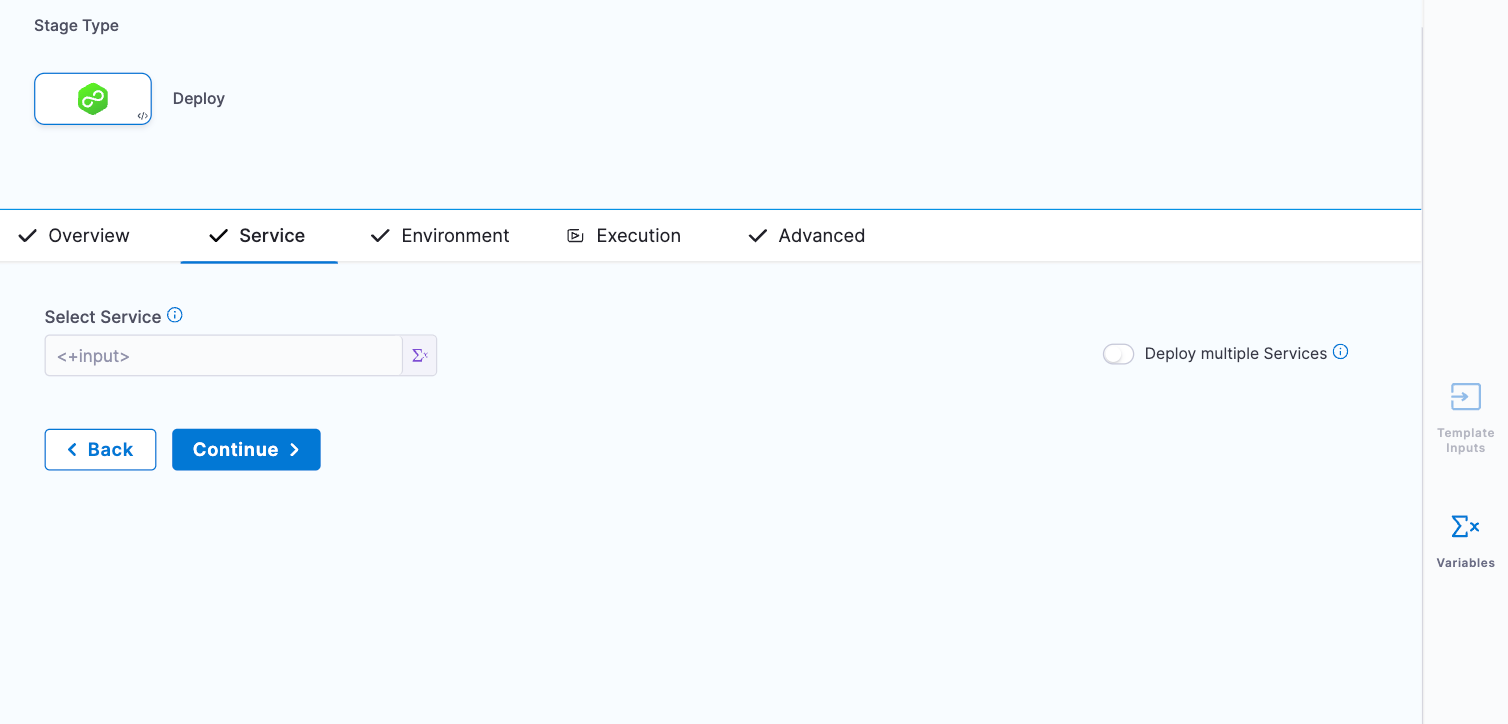
Harness Services represent your microservices or applications logically. You can propagate the same service to as many stages as you need.
Use Runtime Inputs instead of variable expressions: when you want to template settings in a stage or step template, use Runtime inputs instead of variable expressions. When Harness tries to resolve variable expressions to specific stage-level settings using fully-qualified names, it can cause issues at runtime. Every pipeline where the stage or step template is inserted must use the same names for fully-qualified name references to operate. With runtime inputs, you can supply values for a setting at deployment runtime.
-
Select Continue.
-
In Specify Environment, select Runtime input. Environments represent your deployment targets logically (QA, Prod, etc). You can add the same environment to as many stages are you need.
-
Select Continue. The Execution Strategies dialog opens.
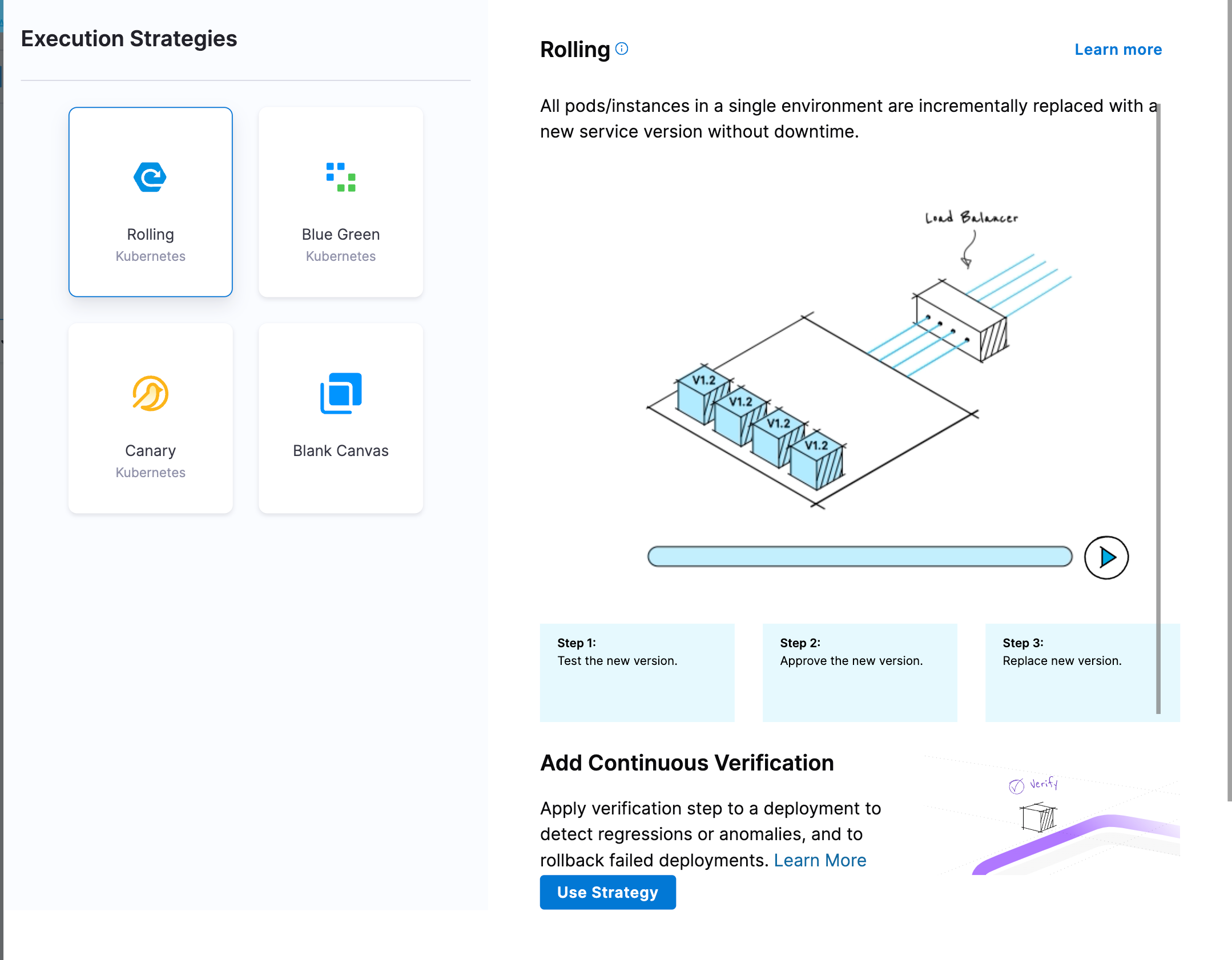
-
Select Rolling, and then select Use Strategy.
In Execution, you can see the Rollout Deployment step is added automatically.
Your template is now ready.
-
Select Save, add a comment, and then select Save again.
The template is published successfully.
Option: Variables
You can add variables to your template as needed.
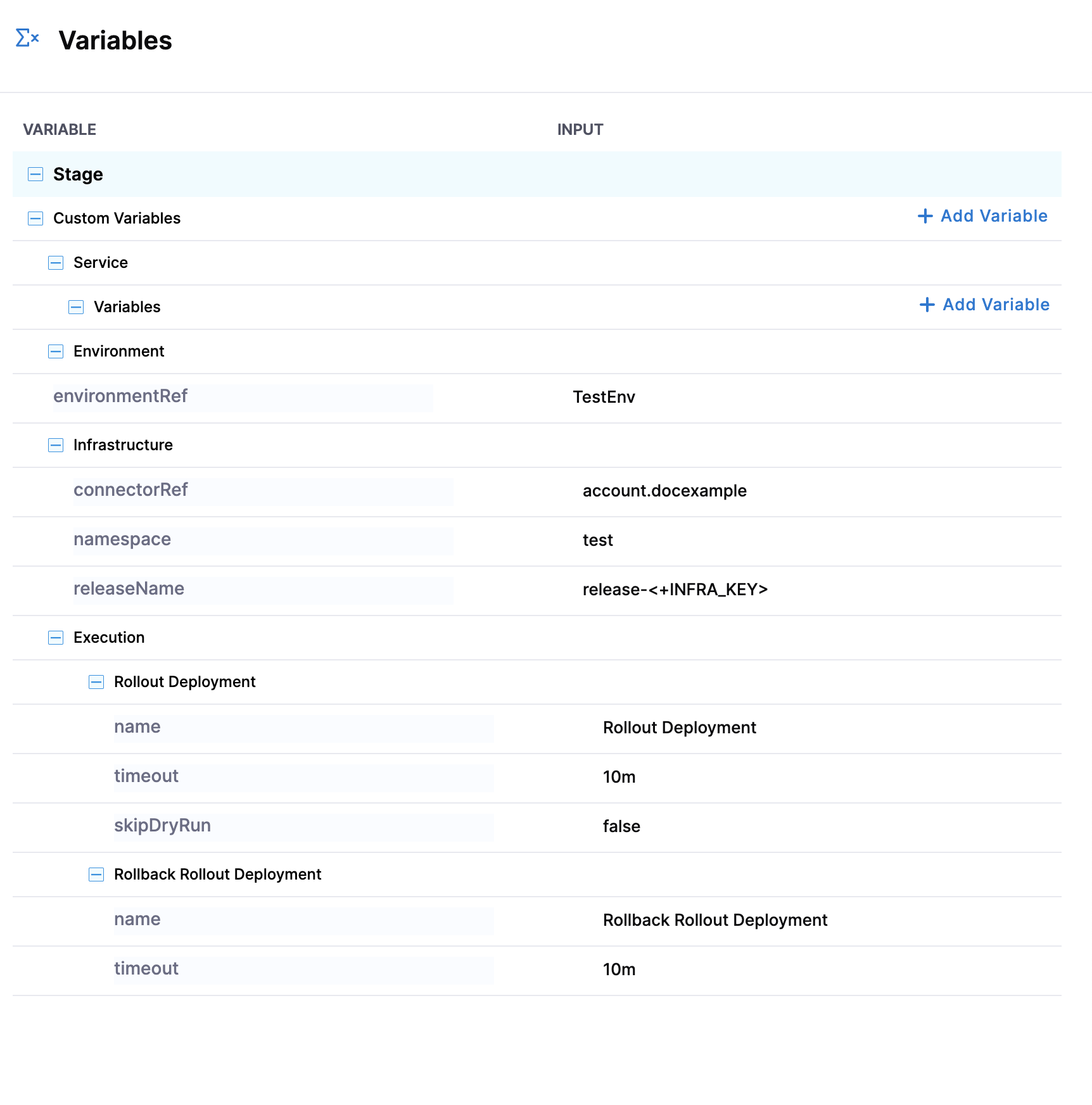
You can add the following types of values to your variables:
- Fixed values: These cannot be overridden.
- Default values in the Template: These can be overridden.
- Expressions: These can be provided during consumption or at runtime.
- Combination of variables and fixed values: These variables will be automatically created as part of the template.
Step 3: Add the stage template to a pipeline
You can use the CD stage template in any pipeline in your project.
To add a stage template to a pipeline, do the following:
-
In Harness, open the pipeline, and then select Add Stage. The Select Stage Type settings open.
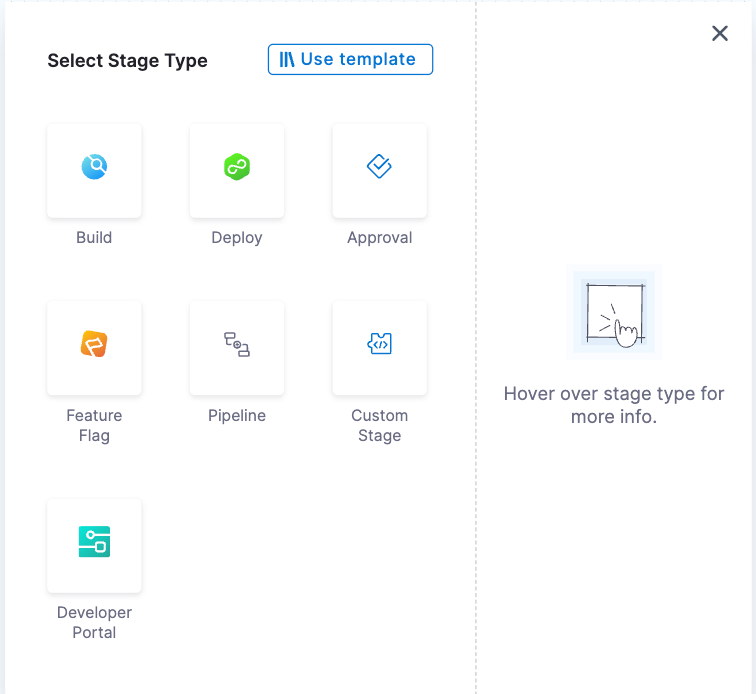
-
Select Use template. The next page lists all the project-level templates.
-
Select the
Quickstarttemplate that you created.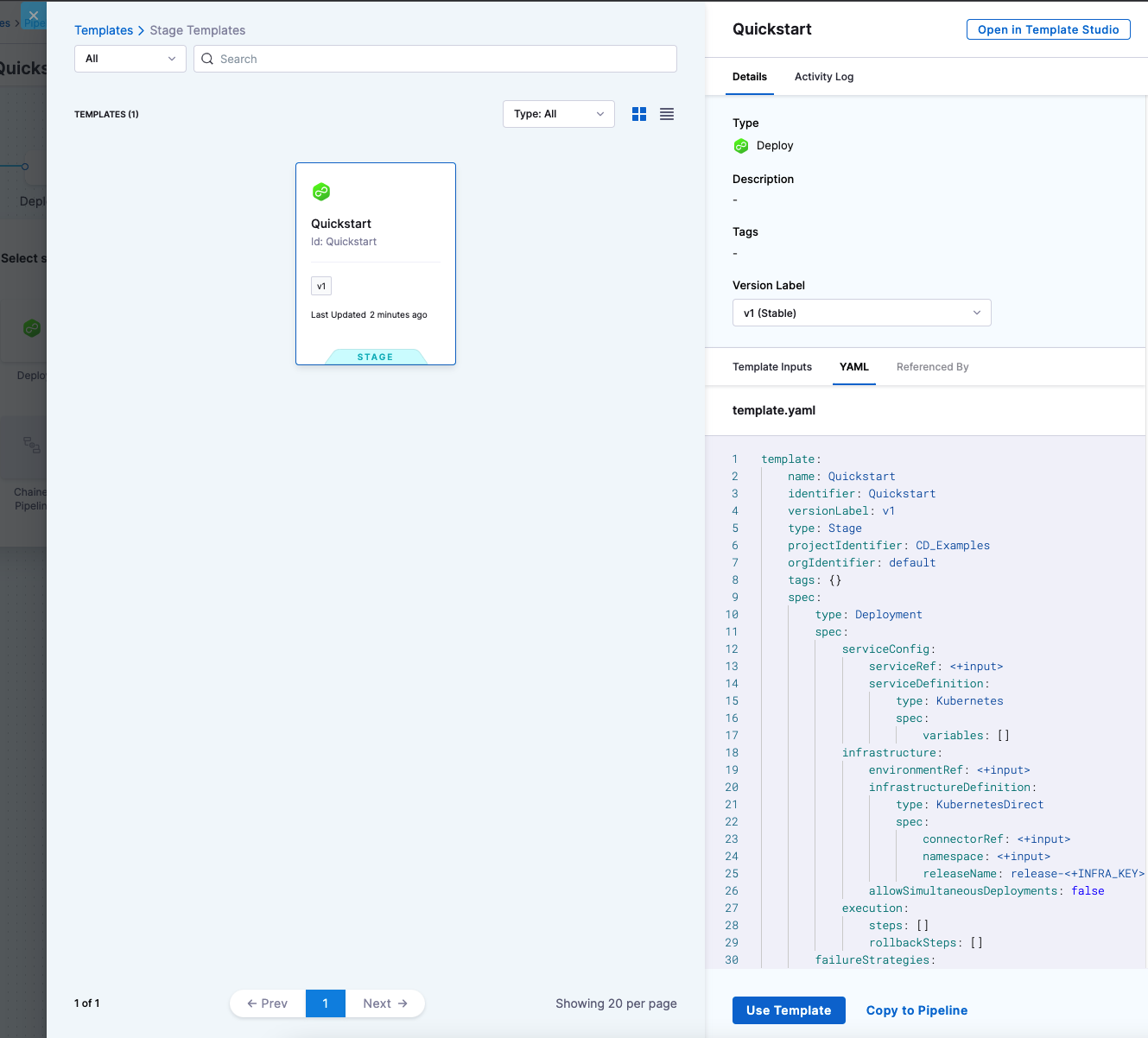
-
Click the Activity Log to track all template events. It shows you details like who created the template and template version changes.
-
In Details, from the Version Label list, select Always use the stable version.

Selecting this option ensures that any changes that you make to this version are propagated automatically to the pipelines using this template.
-
Select Use Template.
The About your stage dialog opens. Enter Quickstart, and then select Set Up Stage.
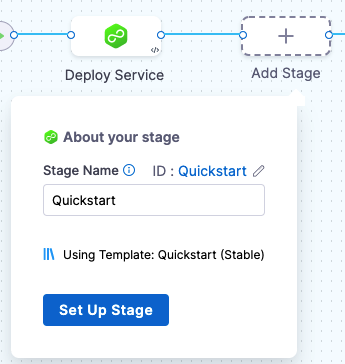
The template stage is added to your pipeline.
The stage is added and not copied by the template icon in the stage.

If you had used Copy to Pipeline, this icon would not be there, and you could change settings in the stage.
You can now enter all the Runtime Inputs for this pipeline execution.

-
Select Save.
You'll notice that you can change and remove the template as needed.
Option: Copy to pipeline
You can copy the contents of a specific template to your pipeline using the Copy to Pipeline option. This does not add any reference to the template. Copying a template to a pipeline is different from linking a template to your pipeline. You can't change any stage parameters when you link to a template from your pipeline.
To copy a template to your pipeline, do the following:
-
In Harness, go to your pipeline.
-
Select Add Stage. The Select Stage Type settings open.

-
Select Use template, and then select the template you want to copy.
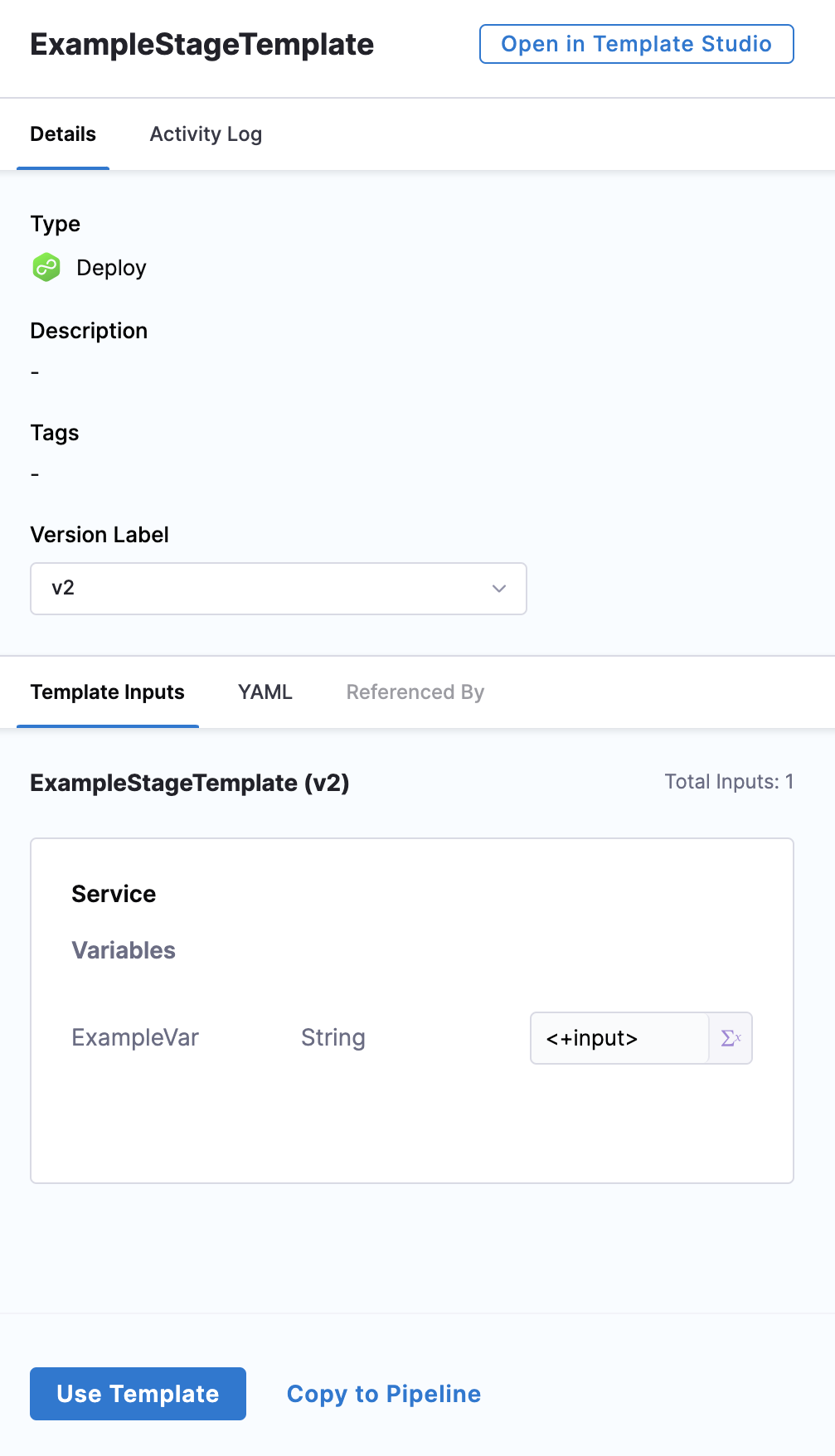
-
Select Copy to Pipeline.
-
Enter a name for your stage, and then select Set Up Stage.

The template contents are copied to your pipeline stage. You can change any settings in the stage that you have copied from a template.